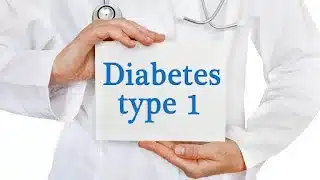Overview:
Type 1 diabetes is a chronic autoimmune disease that occurs when the immune system attacks and destroys the insulin-producing cells (beta cells) in the pancreas. Insulin is a hormone that regulates the amount of glucose (sugar) in the blood. Without insulin, the body cannot properly use or store glucose, leading to high blood sugar levels, which can cause damage to organs and tissues over time.
Type 1 diabetes usually develops in childhood or adolescence, although it can occur at any age. It affects about 10% of people with diabetes. The exact cause of type 1 diabetes is unknown, but it is believed to be a combination of genetic and environmental factors.
Symptoms of Type 1 diabetes can include:
- Increased thirst and urination
- Extreme hunger
- Weight loss
- Fatigue
- Blurred vision
- Slow healing of cuts or sores
- Numbness or tingling in the hands or feet
- Dry, itchy skin
- Yeast infections
- Mood swings
Diagnosis of Type 1 Diabetes:
Type 1 diabetes is diagnosed through blood tests that measure blood glucose levels and other indicators of diabetes, such as HbA1c (glycated hemoglobin) and C-peptide. Treatment of type 1 diabetes involves insulin therapy, which replaces the missing insulin in the body. Insulin can be delivered through injections or an insulin pump. Blood glucose monitoring is also important to ensure that the right amount of insulin is being delivered and to adjust treatment as needed.
In addition to insulin therapy, people with type 1 diabetes need to follow a healthy diet and engage in regular physical activity to help control blood sugar levels. They also need to monitor their blood glucose levels regularly and make adjustments to their insulin dosage and diet as needed. Regular check-ups with a healthcare provider are important to monitor for complications and adjust treatment as necessary.
Complications of type 1 diabetes can include:
- Eye problems, such as retinopathy, cataracts, and glaucoma
- Kidney damage (nephropathy)
- Nerve damage (neuropathy)
- Foot problems, including ulcers, infections, and amputations
- Skin and mouth conditions, such as infections and gum disease
- Heart and blood vessel disease
- Pregnancy complications, including birth defects and premature delivery
Managing type 1 diabetes can be challenging, but with proper care, people with type 1 diabetes can lead healthy, active lives. Research is ongoing to find new treatments and eventually a cure for this disease.
Treatments for Type1 Diabetes
The primary treatment for type 1 diabetes is insulin therapy, which involves injecting insulin into the body to replace the missing insulin produced by the pancreas. There are different types of insulin available, including rapid-acting, short-acting, intermediate-acting, and long-acting insulin, which can be used in different combinations to manage blood glucose levels throughout the day.
Insulin can be delivered through injections using a syringe or insulin pen, or through an insulin pump, which is a small device that delivers insulin continuously throughout the day through a tube inserted under the skin. A continuous glucose monitoring (CGM) device can also be used to measure blood glucose levels throughout the day and provide real-time feedback to adjust insulin doses.
In addition to insulin therapy, people with type 1 diabetes need to follow a healthy diet that is low in carbohydrates and high in fiber, fruits, vegetables, and whole grains. They should also engage in regular physical activity, such as walking, swimming, or cycling, to help control blood glucose levels and improve overall health.
Other treatments for type 1 diabetes may include:
- Pancreas transplantation: This involves transplanting a healthy pancreas from a donor into a person with type 1 diabetes. This is usually reserved for people who have severe diabetes complications or who have difficulty managing blood glucose levels with insulin therapy.
- Islet cell transplantation: This involves transplanting insulin-producing cells (islet cells) from a donor pancreas into a person with type 1 diabetes. This is a less invasive procedure than pancreas transplantation, but it is also less effective and may require lifelong immunosuppressive therapy to prevent rejection.
- Artificial pancreas: This is a system that combines insulin delivery with continuous glucose monitoring to provide automatic insulin adjustments based on real-time blood glucose levels.
Research is ongoing to develop new treatments for type 1 diabetes, including immunotherapy, which involves modulating the immune system to prevent it from attacking the beta cells in the pancreas. Gene therapy and stem cell therapy are also being investigated as potential treatments for type 1 diabetes.


.jpeg)